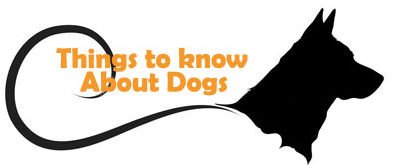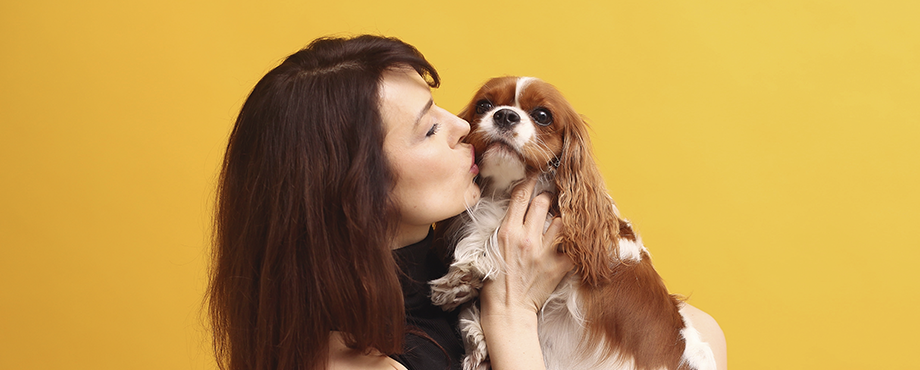When your dog comes to greet you, all excited, jumps like a goat, runs around the room, lies on his back waiting for a pat on the tummy, or waggles his tail enthusiastically, you can safely say that he is happy!
These obvious signs reflect your dog’s happiness. Even if he can’t express himself in words, he will show you by his behaviour, body language or physical condition. Learning to recognize the general signs of a happy – or unhappy – dog is a good way to find out if he’s happy or unhappy.
The signals of happiness delivered by body language
Each dog is unique, with its own personality and temperament. Even within the same breed, dogs have different body types and shapes. Nevertheless, all dogs express, through their body language, a number of common signals that let you know whether they are happy or not.
A happy dog seems comfortable and “comfortable”. If you look at his head, his mouth is neither closed nor tense, but rather soft and often partially open, with his lips stretched out towards his ears, as if he is smiling broadly. Whether erect or hanging, his ears remain relaxed, in the “normal” position, not tensed, low and pointing backwards or awake, pointing to some kind of stimulus. If you look at his general posture, the happy dog appears relaxed, with his head raised and tail at rest or sometimes raised but supple.
A happy dog wags its tail (fairly quickly) while keeping the rest of its body loose.. On the other hand, if he holds his tail horizontally and moves it slowly, while his body is tense, he is rather on guard (and vigilant) or nervous. Just a precision, a dog with a very short tail, will rather wag his whole butt (as if he was dancing the samba!) or just the root of the tail.
If he lies on his back, legs up and shows his belly, he is happy, just as when he “bends”, chest on the ground, hindquarters raised, tail flapping, while yelping with excitement. (This is an invitation to play, which it is interesting to respond to for his and your pleasure).
A happy dog also leans against his master or the hand that caresses him. If you get the impression that your dog is relaxed in your presence and appreciates your attention, then you can tell that he is happy.
Finally, look at his eyes: happiness comes with dilated pupils, a bright, bright eye. Her coat is also silky, shiny. A dog with a dull coat, with tousled or tangled hair, or who sheds his hair certainly has a problem (either an illness, or a general malaise).
The signals of happiness delivered by behaviour
Happy dogs share a wide range of behaviours in common, although factors such as aging, breed or health status can affect the way they exhibit these specific behaviours.
Generally a dog that is comfortable in his own skin does not destroy everything in his path and seems happy and relaxed in his familiar surroundings. Destructive behaviour is often a sign of anxiety or stress.
His happiness is also correlated with a good appetite… (and a bowl that is always empty!): this proves that he feels physically well and emotionally satisfied. Any change in his appetite should alert you: it may be one of the very first signs that he is sick or not feeling well.
His joy is also expressed by his excitement at the idea of playing, going for a walk or going for a drive (to go for a walk afterwards of course!). The absence of any interest in these activities certainly reflects that your dog isn’t feeling well or hurting somewhere. He also displays boundless curiosity, sniffing everything in his path and taking an interest in his surroundings.
Finally, he welcomes you on the doorstep, partying, even if you’ve only been gone for 10 minutes.

How do I know my dog is unhappy?
We’ve just seen that your dog’s behaviour and body language can tell you that he’s happy. The opposite is also true, since they also indicate sadness, discomfort or possible illness. Here are a number of warning signs of your dog’s discomfort:
- Tail down or tucked under the belly. If your dog wears his tail low, below the horizontal, it is a sign that he is afraid or stressed; if it is tucked under the belly between the hind legs (the posture of the hind legged dog), he shows his submission, because he is very anxious and uncomfortable. The way in which he wags his tail is also important: a high tail that is erect, very mobile and wags in all directions is undoubtedly a sign of great joy, whereas a tail that is close to the horizontal, beating slowly, with the body remaining taut, may mean that your dog is alert, afraid or worried. Be careful also, an aggressive or threatening dog has its tail stretched out horizontally; the tail has bristly hair, is often almost immobile or has small tremors (be careful if it is a dog with a very short tail, it is difficult to detect).
- A tense body. An anxious dog is anything but relaxed! He may curl up on himself, flatten himself, arch his back, keep his head down and avoid eye contact. If your dog remains motionless, he must feel very uncomfortable.
- Ears back. A stressed or anxious dog, tucks his ears backwards and places them on his head, keeping them taut (it is harder to see if the ears are long and drooping, so they are further back and on top of the head than usual).
- Soothing behaviour. If he stands on his back, legs up, but doesn’t look confident at all, with his body stretched out and immobile, he is probably very worried. It’s his way of telling you that he doesn’t want you to get angry with him. If he licks his lips repeatedly while yawning, it is also a sign that he is uncomfortable with the current situation.
- He’s hiding or leaving. If he is trying to hide behind you or another object, it is clearly because something is frightening or stressful for him. In this case, don’t stop him and let him go into hiding or run away; your dog is telling you that he needs a “break”, a quiet moment to calm down.
- It bristles the hair on its neck, back and/or tail.. This physical indicator means that your dog is afraid, angry or aggressive, threatening. In the latter case, the chops are rolled up, revealing the fangs. He grunts and stares at you (do not hold his gaze or he may act and attack).
What can I do to keep my dog happy?
It is important to remember that a healthy dog is a happy dog. and that her happiness also depends on you meeting her needs, both physical and emotional.
One way to keep your dog in good physical health is to take him to the vet regularly for his annual check-up and vaccination booster. During this visit, the veterinarian checks that he is well protected against external parasites (fleas and ticks in particular) and internal parasites (especially digestive and/or cardio-pulmonary parasites).
It is also essential to choose a balanced diet based on quality protein and to follow a regular schedule for meal administration.
Your dog must also be able to exercise himself sufficiently each day, play to be mentally stimulated and covered with love and tenderness.
Another way to make sure your dog is happy is to be healthy and happy yourself! While your dog may feel his own emotions, he also reacts strongly to your mood: the fitter and more comfortable you are, the more comfortable and happy your dog will feel.
Your dog doesn’t seem happy for one reason or another, and that worries you? Do not hesitate to consult your veterinarian. He or she will examine it for possible illness or other health problems. He’s the best person to guide you and your pet back to happiness.
[1] Anne DRUGUET – Contribution to the study of intra- and interspecific communication in dogs: an attempt to approach the human-dog relationship, thesis 2004



 <!–
<!–